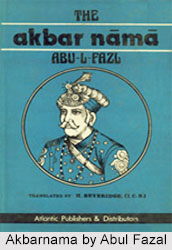 Medieval History of Kashmir defines the rule of Delhi Sultanate, Huns and later the Mughals, which led the Dark Age in Kashmir region, by the demolition of many Hindus and Aryan shrines, which now turned into ruins in the modern era, now maintained by the Archaeological Survey of India.
Medieval History of Kashmir defines the rule of Delhi Sultanate, Huns and later the Mughals, which led the Dark Age in Kashmir region, by the demolition of many Hindus and Aryan shrines, which now turned into ruins in the modern era, now maintained by the Archaeological Survey of India.
References in Nilmata Purana
Nilmata Purana which was compiled in 500-600 AD, contains accounts of Kashmir`s early history. However, being a Puranic source, it has been argued that it suffers from a degree of inconsistency and unreliability.
References in Rajatarangini
Rajatarangini (River of Kings) by Kalhana defines vividly the medieval history of Kashmir, which began from the rule of Turks and later the Delhi Sultanates. All the 8000 Sanskrit verses of which were completed by 1150 CE are made as the chronicles of Kashmir`s dynasties from mythical times to 12th century. It relies upon traditional sources like Nilmata Purana, inscriptions, coins, monuments and Kalhana`s personal observations borne out of political experiences of his family. Towards the end of the work mythical explanations give way to rational and critical analyses of dramatic events between 11th and 12th centuries, for which Kalhana is often credited as India`s first historian.
Other Medieval References on Kashmir
During the reign of Muslim kings in Kashmir, before Babur, three supplements to Rajatarangini were written by Jonaraja (1411-1463), Srivara and Prajyabhatta and Suka, which end with Akbar`s conquest of Kashmir in 1586. The text was translated into Persian by Muslim scholars such as Nizam Uddin, Farishta and Abul Fazl. Baharistan-i-Shahi and Haidar Mailk`s Tarikh-i-Kashmir (completed in 1621 CE) are the most important texts on the history of Kashmir during the Sultanate period. Both the texts were written in Persian and used Rajatarangini and Persian histories as their sources.
Medieval Name of Pir Panjal Range
According to the Muslim tradition, the name of Pir Panjal Range is taken from the name of the Sufi saint in medieval India. The Muslims prefixed the word "Pir" to it in memory of Siddha Faqir and the name thereafter is said to have changed into Peer Panjal.
Naming of Jammu in Medieval India
According to the local folklore, Jammu was founded by Hindu King Raja Jambu Lochan in the 14th century BC, when Delhi was in the decline stage of Delhi Sultanate. During one of his hunting campaigns he reached the Tawi River where he saw a goat and a lion drinking water at the same place. The king was impressed and decided to set up a town after his name, "Jamboo". With the passage of time, the name was corrupted and became "Jammu". In modern era the state is known as Jammu and Kashmir.
Decline of Muslims and the Coming of British East India Company
The Kashmir region, in its present form, became a part of the Hindu Dogra kingdom at the end of the First Sikh War in 1846, when, by the treaties of Lahore and Amritsar in modern Punjab, Maharaja Gulab Singh, the Dogra ruler of Jammu, was made the ruler of Kashmir to the eastward of the River Indus and westward of the River Ravi. The Dogra rulers - Maharaja Gulab Singh (1846 to 1857), Maharaja Ranbir Singh (1857 to 1885), Maharaja Pratap Singh (1885 to 1925), and Maharaja Hari Singh (1925 to 1950) and laid the foundations of the modern Jammu and Kashmir state.
Related Articles
Jammu and Kashmir
Kashmir
History of Kashmir
Kashmir Valley






